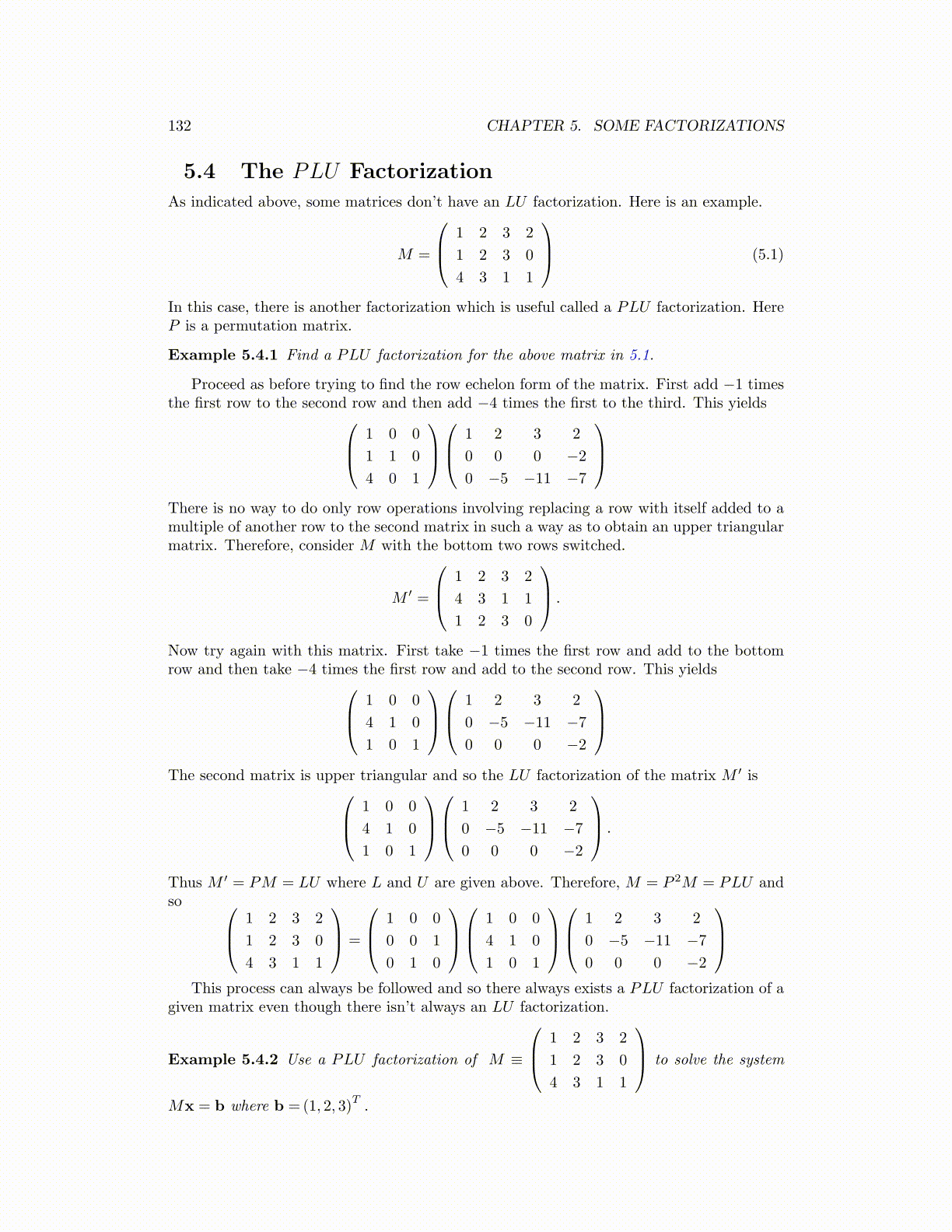
132 CHAPTER 5. SOME FACTORIZATIONS
5.4 The PLU Factorization
As indicated above, some matrices don’t have an LU factorization. Here is an example.
M =
1 2 3 2
1 2 3 0
4 3 1 1
(5.1)
In this case, there is another factorization which is useful called a PLU factorization. HereP is a permutation matrix.
Example 5.4.1 Find a PLU factorization for the above matrix in 5.1.
Proceed as before trying to find the row echelon form of the matrix. First add −1 timesthe first row to the second row and then add −4 times the first to the third. This yields 1 0 0
1 1 0
4 0 1
1 2 3 2
0 0 0 −2
0 −5 −11 −7
There is no way to do only row operations involving replacing a row with itself added to amultiple of another row to the second matrix in such a way as to obtain an upper triangularmatrix. Therefore, consider M with the bottom two rows switched.
M ′ =
1 2 3 2
4 3 1 1
1 2 3 0
.
Now try again with this matrix. First take −1 times the first row and add to the bottomrow and then take −4 times the first row and add to the second row. This yields 1 0 0
4 1 0
1 0 1
1 2 3 2
0 −5 −11 −7
0 0 0 −2
The second matrix is upper triangular and so the LU factorization of the matrix M ′ is 1 0 0
4 1 0
1 0 1
1 2 3 2
0 −5 −11 −7
0 0 0 −2
.
Thus M ′ = PM = LU where L and U are given above. Therefore, M = P 2M = PLU andso 1 2 3 2
1 2 3 0
4 3 1 1
=
1 0 0
0 0 1
0 1 0
1 0 0
4 1 0
1 0 1
1 2 3 2
0 −5 −11 −7
0 0 0 −2
This process can always be followed and so there always exists a PLU factorization of a
given matrix even though there isn’t always an LU factorization.
Example 5.4.2 Use a PLU factorization of M ≡
1 2 3 2
1 2 3 0
4 3 1 1
to solve the system
Mx = b where b =(1, 2, 3)T.